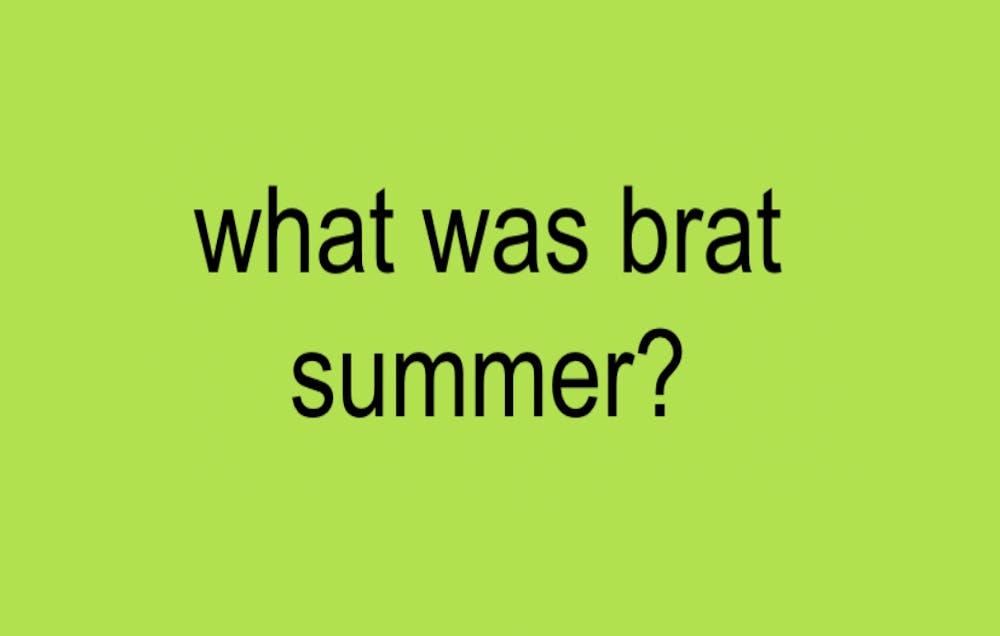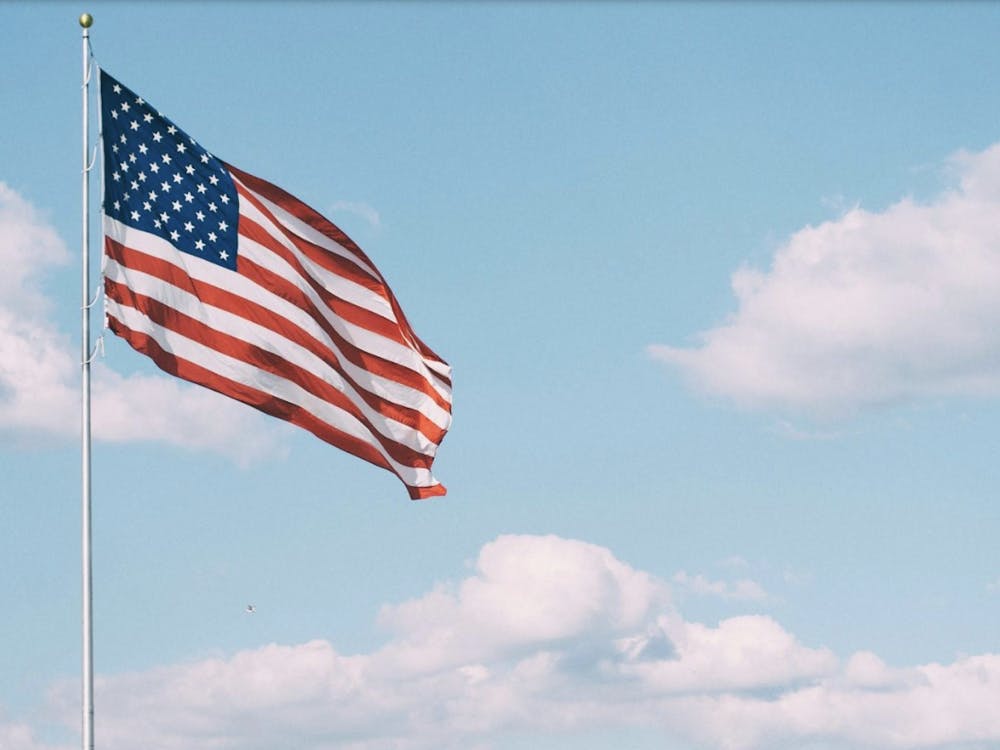Four letters on a slime-green square.
That’s all it took for Charli XCX to define the vibe of an entire summer. Brat was a moment to be sure — one that Generation Z and millennials ate up with unprecedented voracity when the album first came out. It then turned into a political moment, which was almost a big enough shock to kill it then and there.
Yet, Brat survived and went on to permeate charts, clubs, memes, threads and just about every corner of the zeitgeist until finally, on Sept. 2, Charli herself announced its death with a short send-off. To eulogize the album and explain a bit more what it did to popular culture, here is a rehash of Brat and how it got to be so... everywhere.
It started out as a “hot girl summer” thing — the type of album born to be bumped at pool parties and clubs, and blasted from car speakers at 3 a.m. Brat was hedonism; Brat was shameless. To be Brat meant being everyone’s favorite angel. It meant being an “it-girl.” It meant ingesting a cocktail of substances. It meant sheer white tank tops and perfectly messed-up eyeliner. Brat gave a voice to that feral desire to be crazy and hot and unstoppable — but also in a cool and nuanced way — all night long.
In many ways, this is exactly what everyone was craving, especially after self-love got coded as unapologetic self-indulgence. This is not to say that Brat was telling us to be annoying and self-centered — or if it was, the message was so blatant that most people doubled down on their passion for the album. Charli XCX delivered irreverent anthems that were tongue-in-cheek — but also not — and the masses loved her for that.
Besides being just the right amount of loud, Brat was also the perfect kind of noise. Tracks were getting stuck in people’s heads, scratching itches in their brains, taking over and pushing all their other thoughts out. The effect was very appealing to a specific kind of listener. Charli’s catchy looping lyrics combined with the synthetic backing made for an all-absorbing listening experience, urging people to lose themselves in the music. This sensibility was well-honed by Charli’s years clubbing and working in the underground music scenes, and it aligned perfectly with many people’s summer intentions: forget everything and have fun.
All these factors — perfectly calibrated to strike the nerve centers of the younger generation — set Brat up for immediate commercial success. From the moment Charli leaked the track “Von dutch” at a boiler room party in February, people were prepared to fixate on the album and soak it into their bloodstreams. But it took two more events to turn Brat into something more than a pop hit, because by the end of the summer, its status had launched from viral album into full-blown cultural phenomenon.
The first thing was that Brat was marketed flawlessly. From the interviews Charli did before the album was dropped to the spontaneous appearance of the brat wall in Brooklyn with its hints and updates about its release, she knew how to get people’s attention. Charli also did a series of remixes with high-profile people like Billie Eilish and Addison Rae. Perhaps most iconically, she and Lorde collaborated on a remix of “Girl, so confusing,” a song which was likely written about Lorde. Then — of course — there were the lyrics of the whole album, which had just enough relatability and shock value to be endlessly meme-ified and referenced on social media. All this ensured that Brat was truly everywhere — reflected off of practically every surface.
The second event, which almost nobody saw coming, was the appearance of Brat in the American election. On July 21, 2024, Charli XCX tweeted: “kamala IS brat.” These were the days when Kamala Harris’ candidacy was fresh, and her campaign was still trying to define its own, well, vibe. When Charli posted the tweet, she received immediate backlash. People called her a sell-out and proclaimed the death of brat summer, saying it was good while it lasted. They felt betrayed that Charli took the fast-living, fun-loving vibes they associated with Brat and affixed them to something as bleak as the election.
Yet even while many people held on to those feelings, popular discourse seemed to show that the vibes, so to speak, were not totally mismatched. There was indeed something Brat about Kamala Harris, and it was evidenced by how readily the internet embraced the “bratification” of her campaign. Pretty soon an avalanche of memes and TikTok edits began to circulate online. Images of the candidate started taking on a green tinge, and her name appeared in black low-resolution font.
Part of this was the result of the Harris social media team’s intentional adoption of the Brat imagery. Just hours after Charli’s endorsement, their profiles turned green, confirming that kamala IS in fact Brat. Yet there was also a response from individual users who not only embraced the juxtaposition, but found it extremely funny. Either way, the fusion of Brat with the Harris campaign lent both projects a symbolic power. It gave Harris’ campaign a much-needed sense of meme-able irony and a way to relate to younger generations. For Brat, it meant ascending to a whole new level of ubiquity.
As of now, brat summer is officially over. Who knows what’s next? Whatever it is, I know many of our summers this year will be marked by green profile pictures, Kamala Harris memes and the endless desire to be bumpin’ that, bumpin’ that.





